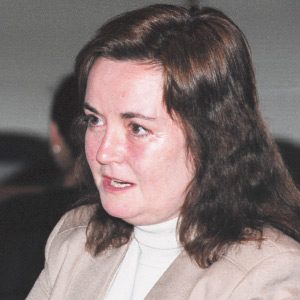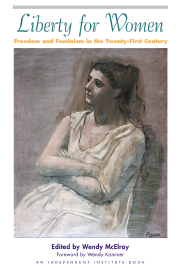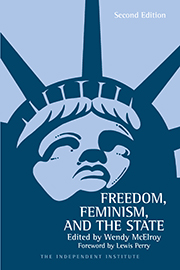The attention of the media and the scientific and medical community has recently been focused on the fraud committed by South Korean scientist Hwang Woo-suk, who claimed to have created human cells from cloned embryos.
Less attention has centered on Miodrag Stojkovic, the scientist who was instrumental in cloning the first human embryo in Britain. Stojkovic recently resigned from his celebrated post at Newcastle University. Now doing research in Spain, he is leveling accusations of scientific impropriety toward former colleagues.
Stem cell research may be the most sensational and explosive scientific development of recent years. But the most heralded breakthrough was a massive fraud; another has prompted a pioneering scientist to cry “foul.” It becomes important to remember the admonition, “Question Authority.”
Medical research is an arcane mystery to lay people, like me, who must rely to an uncomfortable degree upon expert opinions. We live under the medical and political policies that can often proceed from research.
Our hopes hinge on technologies like stem cell research—which may point to cures for diabetes or Alzheimer’s Disease. Our fear creates opportunities for modern versions of snake-oil remedies: for example, the “genetic tests” sold on the Internet which allegedly measure the risk of developing diseases but which scientists call a “waste of money.”
Ideally, an educated media asks the skeptical questions that protect public interest. That ideal is rare. And, so, “Question Authority” becomes personal responsibility. But which questions should be asked?
The facts of the two controversies provide some guidance.
Hwang was a case of outright fraud but Stojkovic’s research has not been discredited. Rather, his allegations concern misconduct in how research has been credited and presented. One criticism: the university ignored sound scientific practice by announcing a breakthrough to the press before peer review had been conducted. The timing seemed designed to steal publicity from the then-lauded Hwang whose paper hit the press at the same moment.
The respected weekly journal of science Nature responded with a June 2, 2005 editorial entitled “Too much, too soon: How not to promote your latest research findings in the media.” Key to Nature’s condemnation was the fact that a “full research paper is kept confidential until it is accepted and published” which meant that the media did not have access either to the Newcastle team’s data or to an informed review. They were merely given conclusions with which to run.
Stojkovic, who co-operated with the press announcement, now claims to have been blindsided by the university.
Whatever the truth, common sense questions should be asked Hwang, the Newcastle team and every other researcher.
The first question pertains to the nature of any claim. Are the results “statistical,” or do they proceed from an unambiguous ‘yes/no’ experiment?
Statistical results generally involve observing data from which correlations can be drawn to indicate possible cause-and-effect. An example is the much-acclaimed research on mouth cancer for which Dr. Jon Sudbo of the Norwegian Radium Hospital observed a database of 908 participants. Sudbo has admitted to fabricating his database. Many questions addressed to statistical studies involve little more than closely analyzing the specifics of the data. For example, when 250 of the 908 people studied by Sudbo shared the same birth date, a red flag should have fluttered.
Results, such as those claimed by Hwang and the Newcastle team, are “yes/no.” That is to say, the cells and embryos were either cloned in the manner indicated, or not. The questions addressed to “yes/no” experiments may be more fundamental than those addressed to statistical claims but all research should be able to answer them. Those questions include:
- Is the report, including all data and methodology, available for examination? If not, then the researcher is asking you to accept his word for the findings.
- What is the researcher’s reputation? More credibility should be accorded to the claims of a scientist with a sound track record than to an unknown factor who comes out of nowhere.
- Who funds the research? A questionable source of money does not invalidate research but public skepticism should sharpen if the funder stands to profit from a specific finding and, indeed, that finding results.
- Have the findings been independently verified? Claims should be sufficiently documented to allow replication. (Unfortunately non-scientific concerns, like patents, sometimes interfere with disclosure.)
- Does the claim contradict previous data? A breakthrough that achieves a difficult result is qualitatively different than one that achieves a result previously believed impossible. A ‘paradigm shift’ demands a high degree of proof because it involves invalidating previous findings.
- Does the claim include policy recommendations or changes in law? Research that includes a political agenda is more likely to express the researcher’s personal beliefs than work that merely states data and findings.
- What is the response of the scientific community?
- Where was the research published? The differing levels of prestige for scientific journals has been quantified in terms of their “impact factor.” If a researcher publishes in a low impact journal, then asking ‘why’ becomes appropriate.
The preceding questions do not guarantee that fraudulent or incompetent work will be detected. For example, Hwang’s work was heralded by the prestigious Science. Sudbo’s work was published in both the New England Journal of Medicine, in April 2004, and the Journal of Clinical Oncology, in March 2005. The scientific community, like the media, is simply not doing its job.
Thus, asking these questions becomes more necessary. The claims of scientific authority should receive the same skepticism that usually greets similarly bold claims of political authority. Both impact your life and are your business.









